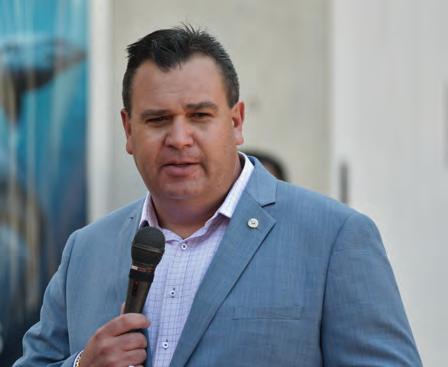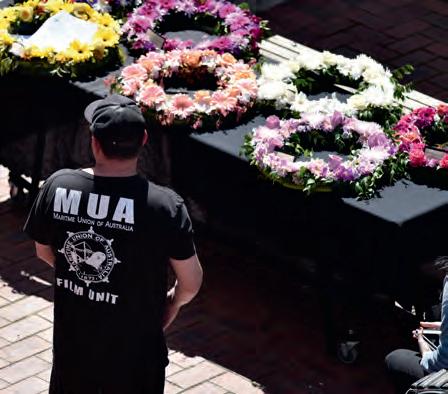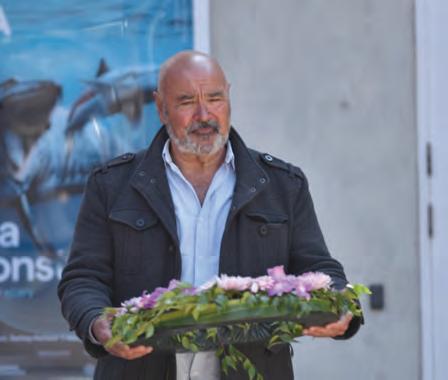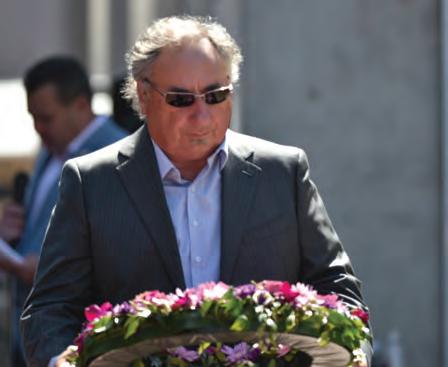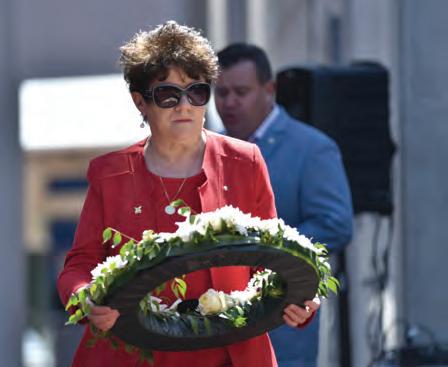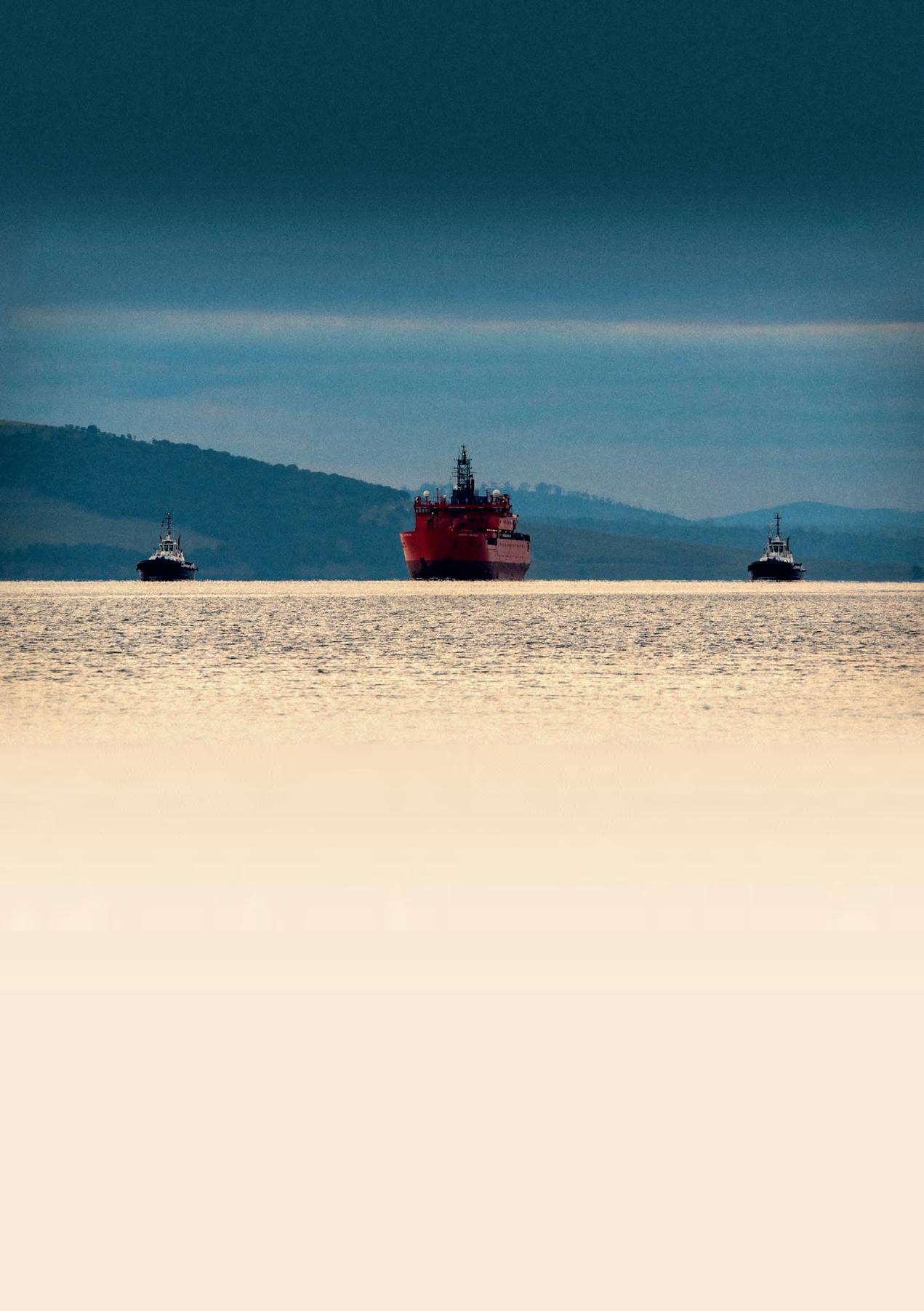
27 minute read
3 NIGHTS ABOARD A FOC
SLEEPING ON BOARD THE UNISON JASPER
Newcastle volunteer inspector for the International Transport Workers’ Federation bunks up with the Burmese crew forced to work Australia’s coastal alumina trade on slave wages
Steve Murray, volunteer for the International Transport Workers’ Federation in Newcastle got a call that a Burmese crew in port, feared for their lives. He drove straight over.
It was after nightfall when he climbed the gangway of Hong Kong flagged bulk carrier Unison Jasper at the Kooragang Island wharf that winter evening, Sunday, 29 July. On deck he was stopped by one of the ship’s Chinese officers.
“Why won’t you let me on the ship,” Steve asked, pulling out his phone to record the conversation. “You’re not paying the workers correctly. I want to talk to them. I’ll wait here all night. I’ll sleep on the deck.”
The crew were standing behind trying to reach out to Steve, but the officer was blocking them.
“So, they stormed past and came out onto the deck,” said Steve. “I had all the crew with me. They were crouching down. They told me they’d been bullied and forced to sign their contract extensions. All had spent just under 14 months on board.”
Steve asked to talk to the captain. The ship’s crew circled him in solidarity and once again pushed past the officer. In the rec room they got the ITF Burmese interpreter in London on the line to get to the bottom of what was happening.
The captain came down with the first officer and told Steve to get off the ship or he would call the police. Steve refused to budge: “I’m not leaving my comrades on board this ship because they fear for their lives,” he retorted.
Hours went by. One of the Burmese seafarers pulled his mattress out of his
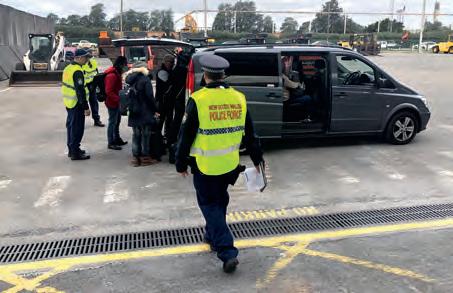
cabin and made up a bed in the rec room.
Steve ordered in takeaway food and drinks. The crew had been eating cups of fried rice for the last two or three weeks and had to buy bottled water off the captain.
Before trying to get some sleep, Steve asked the crew for a deck knife as protection in case things turned ugly.
“They do murder people on some of these ships,” he said, alluding to the deaths of three seafarers on the Sage Sagittarius in 2012. “They throw people over the side if they complain.” Around 1.30am the officers came into the rec room, saw Steve had a knife and retreated. Then about 3.30am Steve got a call from police asking what he was doing on board.
“I told them everything,” he said. “They said if I had any problems, I’d best give them a ring.”
When morning came Steve joined the crew for a cup of rice. Once ITF inspector Dean Summers arrived from Sydney, they held a meeting with the captain.
“They had nine-month contracts with dodgy Burmese manning agents, and they were forced to sign an extension,” Steve said. “In fact, the Chinese captain said, ‘If you don’t sign these extensions, I’ll sign them.’ And so, he did. They were working against their will. That’s effectively slavery.”
Conditions on board were shocking. The Burmese crew were only paid 30% of their wages, with a total of US$153,000 owing in stolen wages.
“They told us if they asked for water, they were made to pay $2 a bottle,” said Newcastle branch secretary Glenn Williams. “The Chinese officer was a grub. The old man was withholding their passports.”
On board the ITF went through all the ship’s books.
“We just keep unveiling more and more corrupt stuff,” said Steve. “The manning agents were all run by gangs and mafia, ones that had been blacklisted. The first officer on board was bullying them to work harder. They just got sick of it and wanted to go home. After 14 months that was their right.”
That morning port state control inspected and detained the vessel. Steve went home for a shower and a bit of time with his family. He had only got a couple of hours sleep on board.
“I’d just got into my bed when I got a phone call from the crew saying the officers were yelling at them to move the ship up berth.”
Steve went back and was boarding the vessel when the captain started raising the gangway. The crew got the controls off him. Steve stayed on board until around midday.
The next morning the captain again ordered the crew to move the ship. As Steve went to climb the gangway it was raised once again.
“I jumped up just in time,” he said. “I had to wrestle the gangway controls off the captain.”
Steve reported to the port authorities the captain was trying to move the vessel undermanned.
Tugs had put their lines on the starboard side of the vessel and the linesmen were ready to let go of the ship.
“Dean and I decided to get everybody’s bags and storm off the ship,” said Steve. “It was a pretty risky move. Once they leave the vessel they are like illegal immigrants or deserters.”
The crew had to keep within 13 metres of the vessel or they could be arrested for breaking Australian law.
“We got some takeaway and waited it out,” said Steve. “Heaps of police, heaps of border force, heaps of other people came down to the wharf. It became a big commotion. Dean was there all day on the phone to embassies, talking to Border Force, police and Immigration getting it sorted.” Steve filmed police reading the crew the conditions for their quarantine in Sydney: “Thank you very much gentlemen. We wish you a safe trip home,” the copper said politely as they were ushered four by four into waiting buses.
As they drove off a group of construction workers waved flags and cheered by the side of the road.
“It was a very emotional time that part,” said Steve. “It was three days and nights with pretty much no sleep, but we finally got our win.”
After 14 days in a Sydney quarantine hotel, all 11 crew flew back to Burma.
“I still talk to them now,” said Steve. “Three of them still message me every single week and ask how I’m going.”
Some of the crew went back to sea. Others, too traumatised, have gone back to farming. •
FLOATING PRISON
The story of the Unison Jasper is not just a story of crew exploitation during a global pandemic, it is also a story of unconscionable government policy.
The bulk carrier was on a temporary licence from Canberra to trade on the Australian coast. It had replaced an Australian ship and an Australian crew, by providing a cheaper option for Tomago Aluminium.
Four years back, in February 2016, 16 Australian seafarers on board the CSL Melbourne in Newcastle, heard their ship and their jobs were being axed. They protested with a sit-in. The company called police to board the vessel and drag the Australian crew off.
Now the police were back, and this time the ship’s crew wanted off. Only the Chinese officers remained. The Hong Kong-flagged, Danishoperated bulk carrier broke every rule in the book. Australian port and state control detained the vessel for breaches of the Maritime Labour Convention then banned it from Australian ports for six months. “We cannot tolerate floating prisons in our waters,” said MUA National Secretary Paddy Crumlin. “It shows the Federal Government’s fundamentally flawed regulation of coastal shipping is leading to the extreme mistreatment of vulnerable workers and violation of their human rights.”
The Unison Jasper was bringing alumina from Gladstone to the Tomago smelter. The ITF had already alerted the Australian Maritime Safety Authority (AMSA) the crew needed help and it had been detained in Brisbane on the way down. Before it reached Newcastle the ship’s officers had attempted to bully the crew into handing back their wages.
“Quite frankly, the Australian Government allowed things to get this bad on the Unison Jasper. They were clearly unconcerned with the seafarers’ conditions on board when they freely issued a temporary licence to this ship one month earlier,” said Summers.
At the time the crew had already worked beyond the legal limit. The ITF had lodged complaints to AMSA for serious breaches of seafarers’ rights.
“The kicker is that this is under a temporary licence issued by the Australian government to run these trades,” Summers said. •
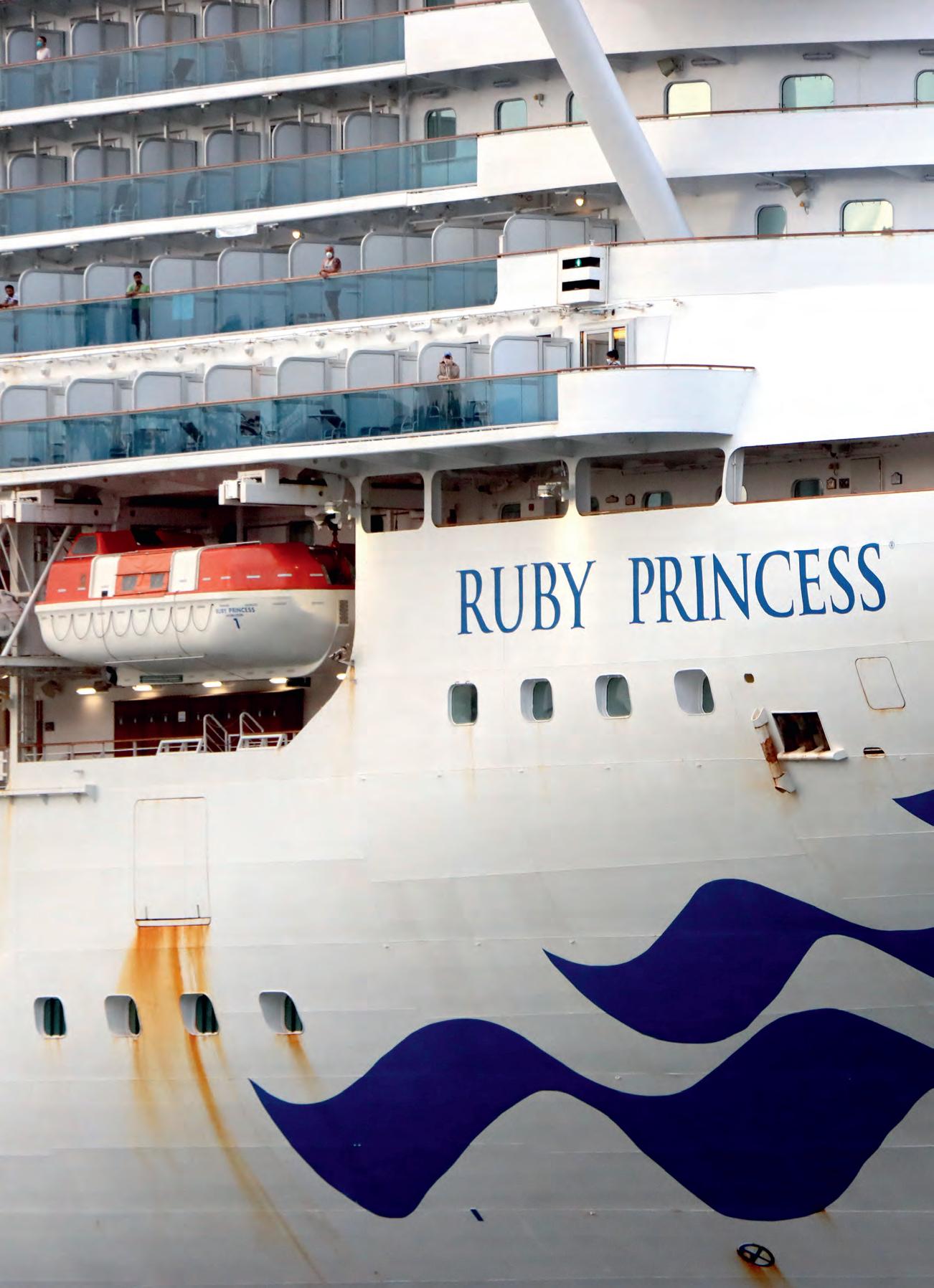
The Ruby Princess crew were given little protection against COVID-19 and no say in the Australian inquiry into the contaminated liner. FALSE DECLARATIONS
It was the height of the global pandemic and Martin White, NSW Port Authority duty pilot in Sydney did not mince words.
“The Skip on that Ruby Princess, he is a bit of a shonk. I think he made a false declaration last time,” he told Duty Manager for Vessel Traffic Steve Howieson on the evening of 18 March.
Ten days earlier, on 8 March, Ruby Princess Commodore Giorgio Pomata answered ‘no’ when asked if any crew on board were ill or if there were any suspected COVID-19 cases.
“Pure lie,” Sarah Marshall,General Manager, Operations - Sydney at Port Authority of NSW emailed a colleague.
The ship’s doctor had already reported to NSW Health that 170 people on board were ill, including crew.
Pomata later apologised saying he misunderstood the question. He meant there were no “confirmed COVID cases”.
This is according to statements, phone transcripts and testimonies to the NSW Special Commission of Inquiry into the Ruby Princess.
The inquiry accepted the Italian captain was not lying but had a language problem. The unions submitted otherwise. They highlighted an inherent conflict of interest between the ship’s desire to obtain pilotage by downplaying the risk on board and its duty to provide reliable information.
Maritime Union National President Paddy Crumlin had written to the Prime Minister in January and again in March, two days before the Ruby Princess docked.
Sydney Branch assistant secretary Paul Garrett had warned the NSW Port Authority that ship crews could not be relied upon to diagnose Covid-19 cases or accurately self-report illnesses.
Australia was still woefully dependent on self-declaration of crew health. It could lead to a viral outbreak in the community, Crumlin rightly predicted.
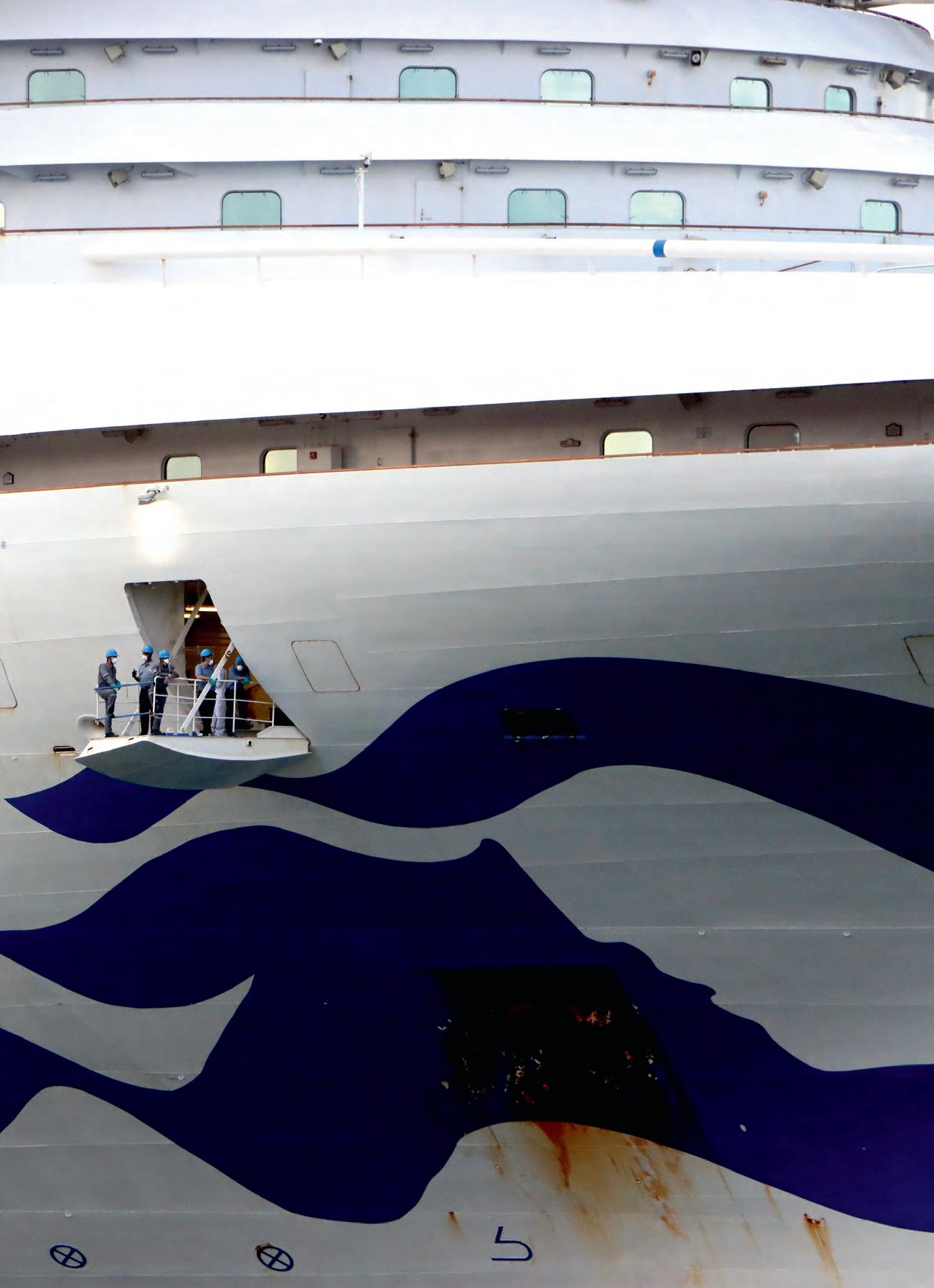
On board the Ruby Princess on the evening of 18 March, hundreds of passengers and crew were dancing ‘shoulder to shoulder’ at a farewell party. Stewards were serving tables without wearing masks or gloves. The ship’s sick bay was overflowing. Once again, the Bermuda flag of convenience vessel declared ‘NO’ to any crew members showing symptoms of COVID-19. This is despite steward Ben Marbiog being swabbed for the virus.
Later that night the ship’s doctor Ilse von Watzdorf also assured the pilot and harbour master two passengers requiring ambulances were not COVID-related.
Yet when Dr Watzdorf booked the ambulances hours earlier, she had warned Carnival onshore management the patients could be infectious. They had tested negative for influenza and had been swabbed for COVID-19. Ambulance officers should wear PPE, she said.
The NSW Special Commission of Inquiry into the Ruby Princess found the doctor was not at fault. She had provided NSW Health a log of 128 ill people on board as required.
Both ambulance patients tested positive. One died. More than 200 crew and 600 passengers contracted the virus.
Ultimately 900 Covid-19 cases and 28 deaths were linked to the ship at last count.
Commissioner Bret Walker found NSW Health was responsible. A panel of expert doctors had judged the ship low risk. They had allowed it to disgorge 2,700 passengers into the community, without awaiting the test results of swabs taken on board for the virus.
Responsibility for the health and safety of the more than 200 crew who tested positive, however, was left to the International Transport Workers’ Federation (ITF) and its affiliate unions in Australia – the Maritime Union of Australia, the Australian Institute of Marine and Power Engineers and the Australian Maritime Officers’ Union.
The ship’s viral outbreak was, according to the union submission, a systemic failure by government and companies to manage the risk of infection among crew and failure to consult with unions or crew.
Seafarers made up one in three people on board the Ruby Princess, but their legal rights were not considered.
Both the NSW government and the company showed scant regard for the health and safety of ship’s crew and onshore workers.
This was in breach of a batch of Australian and foreign conventions, laws and agreements that give “every seafarer the right to a safe and secure workplace, health protection and medical care.”
The Ruby Princess is owned by Princess Cruise Lines Ltd (Princess Cruises). From October 2019 until May 2020, the ship was under a time charter to Carnival.
Late on the evening of March 18, the 113,000-tonne liner sat at Bradleys Head, awaiting pilotage. Carnival management had noted a ‘significant spike’ of people reporting flu-like symptoms. “Numbers (had) gone berserk”. Some had tested negative to influenza A and B – yet another red light that the virus was on board.
The Ruby Princess was one of four ships rushing back that night to beat the government port closures.
Harbour master Cameron Butchart received a call from Peter Dilonardo, NSW Ambulance senior supervisor, around 10pm. Two patients on the Ruby Princess had respiratory issues “one of the signs of corona.”
Butchart thought the call might be a hoax.
“I can’t get anybody at f... Carnival on the telephone,” he said.
Butchart’ s superior could. A Carnival manager, assured him that, no, the ambulance patients were not coronavirus related and, yes, NSW Health had cleared the ship.
It was the middle of the night and a flurry of calls followed.
The Ruby Princess staff captain rang pilot Martin White from the bridge.
“They were desperate to get in,” said White.
White asked three questions – were there any sick passengers or crew on board, what were their symptoms, and could the ship send him a copy of its acute respiratory diseases log.
He also spoke with ship’s doctor Watzdorf on board just after midnight.
“We sent the full report through to NSW Public Health and they’ve cleared us for disembarkation with a general precaution,” she said.
Butchart rebooked pilotage. Pilot Sam Chell boarded the Ruby Princess at 1.08am.
On the bridge the staff captain, captain navigator, deck officer, helmsman, lookout (able seamen) and a security guard were waiting for him.
Chell recalls the lookout offering coffee, which he declined.
Meanwhile, word had reached Australian Border Force (ABF) that ambulances were required for “two query coronavirus patients” from the Ruby Princess. An official woke Butchart at 2.15am to “alert me that the ship may need to go back to sea.”
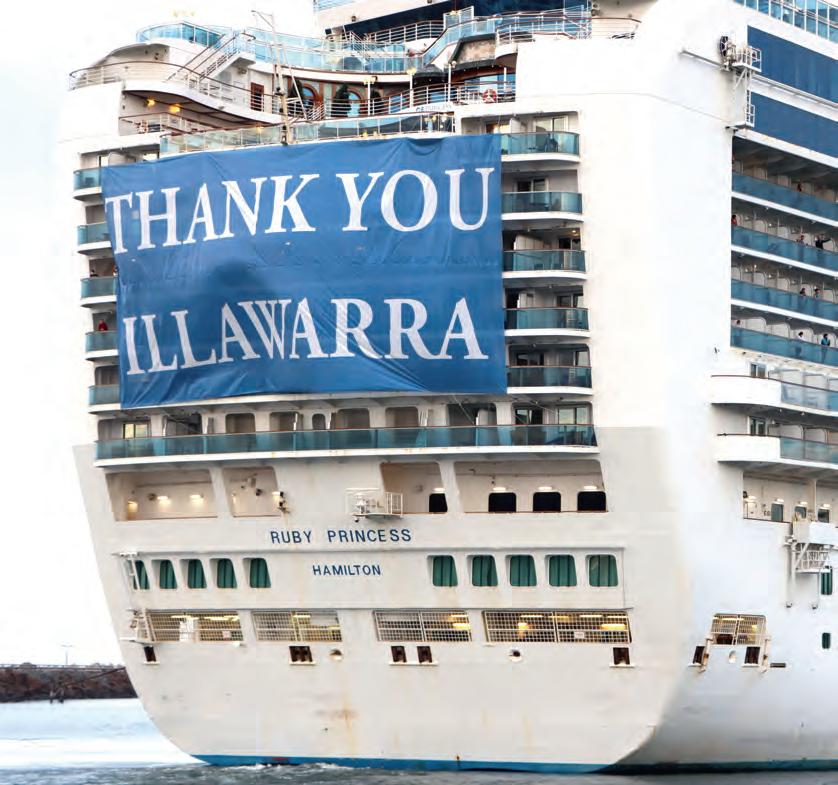
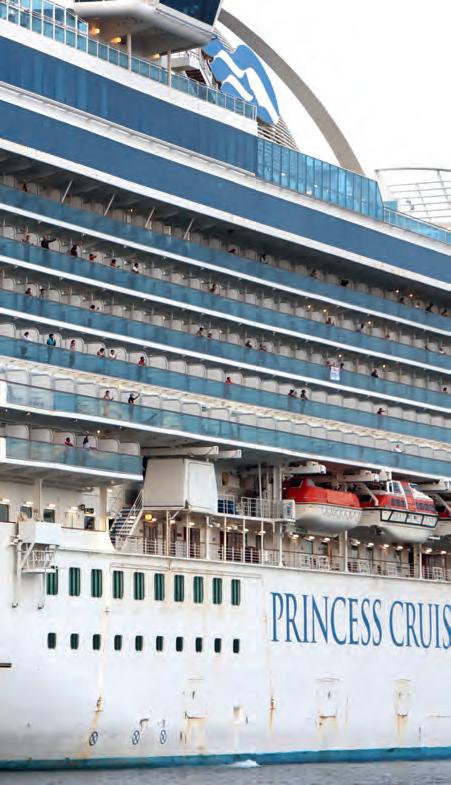
Checking his MarineTraffic app Butchart noted the Ruby Princess was passing Taronga Zoo. He told ABF the ship could still be held back.
Someone higher up at ABF overruled the concerned officer. “Bring it in,” she said.
Chell walked down the gangway around 2.30am.
As passengers were herded past crew and down the gangway, the next morning, they also exposed onshore workers, including the linesmen and baggage handlers.
Only after the ship left port did Filipino steward Ben Marbiog’s test results return positive. But Marbiog was left on the ship with 1057 crew mates. Within a month 210 crew had tested positive.
While Commissioner Walker said crew welfare was outside his terms of reference he acknowledged it mattered.
“The substantial claims by the unions for (an) expanded inquiry must be acknowledged,’ he said. “None of the comments (above) should be read as downplaying the gravity of the issues concerning the welfare of the crew. It was, and remains, very great.”
The inquiry heard that throughout the voyage, crew shared cabins, some four to a room. They mixed freely with other crew and passengers.
Many crew from India, Indonesia and the Philippines did not know they could get free tests. There were no face to face meetings between staff and supervisors.
All crew members should have been tested for COVID-19 as soon as it was known that Marbiog had tested positive, the unions submitted. He should have been brought ashore.
The Ruby Princess was ordered to leave Australian waters, but the ITF persuaded politicians to demand crew tests and repatriations before it sailed.
“Lives are at risk,” Summers said. “It would be a death sentence for some crew. They’d start stacking up the bodies in the freezer. You can’t get medical evacuations that far at sea.”
A thousand seafarers remained trapped on the vessel a month, off Port Kembla. Emails said to be from a crew member of the Ruby Princess were posted on a cruise blog run by a Miami based lawyer, Jim Walker at the end of March, the Guardian reported.
“The crew is sick and getting sicker,” read the email. “No idea how many actually have Covid but many have symptoms including lack of taste a nd smell.”
Seafarers were denied the right to onshore medical treatment and denied their right to legal representation during police interviews. They were not allowed an ITF lawyer to represent them, only a company lawyer.
The ITF along with MUA Port Kembla and the South Coast Labor Council demanded the full testing of the crew while the ship was alongside. They got media. They got politicians on side. They won repatriation for 600 before the Ruby Princess set sail on 23 April.
“Then the ship sat in Manila Bay where she waited at anchor for another four weeks,” said Summers, bitterly.
While the ship was in Australian waters neither SafeWork NSW nor the Australian Maritime Safety Authority took steps to ensure the Ruby Princess was a safe workplace nor to ensure that crew had adequate medical care.
Australia set up its National Protocol for Managing Novel Coronavirus Disease Risk from Cruise Ships without consulting unions. Likewise, the Australian Cruise Ship Surveillance Program worked with the company, shipping agents and government, not the unions representing the crew.
In total 210 of 1148 (18%) of the crew contracted COVID-19.
“There could be no more damning evidence of failure to protect the health and safety of seafarers on the Ruby Princess,” the union submitted. “The Port Authority of NSW, NSW Health, SafeWork NSW, AMSA, the Bermuda Shipping and Maritime Authority and Princess Cruise Lines Ltd have all failed their duty of care.”
Union calls for an expanded inquiry remain unanswered. •
SHONKY LAWS A RISK TO LIFE AND LIMB
Union takes on law allowing shipping on the coast to opt out of international standards in crew qualifications and ship safety
Laws for domestic vessels now allow backpackers and unqualified workers to crew vessels on the coast, even out to sea and across some of the nation’s most dangerous oceans. Not only are crew qualifications and safety compromised, but companies can write their own rules on how flammable cargo can be stowed alongside fuel and passengers without oversight.
This is according to union submissions and testimonies to the Senate’s Rural and Regional Affairs and Transport Committee and the Productivity Commission.
“It’s been a disgraceful abrogation of oversight,” MUA National Secretary Paddy Crumlin told the Senate committee.
“Not only has the (General Purpose Hand/deckhand qualification) been watered down somewhat itself; it is now applying to an area of safety, training and certification of watchkeepers, which can only end up in injury, loss of life and maybe even loss of vessels.”
Crumlin said the law opened “a grossly inferior certificate that was a starting point in ‘tinny to tanker’ (model).”
Union participation in the Senate Inquiry into the Performance of AMSA has resulted in a bipartisan recommendation that the government commission an independent review of the Marine Safety (Domestic Commercial Vessel) National Law Act.
The union also made submissions and gave evidence on these problems to the Productivity Commission and to the Senate shipping inquiry.
The Marine Safety (Domestic Commercial Vessel) National Law Act, dates back to 2012 and was designed to replace separate state and territory regulations. It also does away with the requirement for vessels to comply with the Navigation Act if they sail between states or territories.Only vessels under the Navigation Act are required to have IRs on board, have a minimum safe manning document, and comply with international maritime conventions.
As of July 2018, the Australian Maritime Safety Authority took over national administration for all commercial vessels. Domestic Commercial Vessel operators write their own safety management systems and determine the level and qualifications of crew – including ‘uncertificated’ crew.
The union has been scathing of how AMSA has taken on this job.
“AMSA, you’re a joke at the IMO (International Maritime Organisation),” Paddy Crumlin told the Senate committee hearings.
“We’ve had long generations of regulation where we were proud to lead the world. You’re a joke at the IMO because you’ve watered down the certification of Australian seafarers, exactly the same as you’ve failed in your port state control overview of the Maritime Labour Convention. You should hang your heads in shame!”
The union has argued in its submissions to both the Productivity Commission National Transport Regulatory Reform hearings and the Senate that many vessels would be better regulated under the Navigation Act. That Act and its Marine Orders have a long history of delivering the high standards Australian shipping is known for.
The MUA advocates that large and complex vessels be returned to the jurisdiction of the Navigation Act, an area that AMSA is effective and practised in regulating.
At the Productivity Commission hearings in Brisbane in January 2020, MUA national officer Garry Keane argued how important properly trained seafarers were for both safety and for providing a national skilled base.
“The only vessels that really need to be covered by the Navigation Act (now) are foreign going vessels,” he added. Keane said that under current rules, a harbour deckhand with a few days training could be working up to 200 miles out to sea - something that once required 12-15 months of training under the Navigation Act.
“Now it could it could be a backpacker who’s come out for a bit of work,” he scoffed.
“You throw in two days training, jump onto a small vessel intended to work around the harbour or river and all of a sudden you’re 200 miles out at sea. That’s madness,” he said.
AMSA now regulates vessels covering the entire spectrum of floating transport from kayaks for hire to intrastate trading vessels, from water taxis to the Manly ferries, and every type of vessel and operation in-between.
The worse-case scenario is shipping across the Bass Strait, where vessels can now also opt out of the Navigation Act.
“More ships have been lost in the
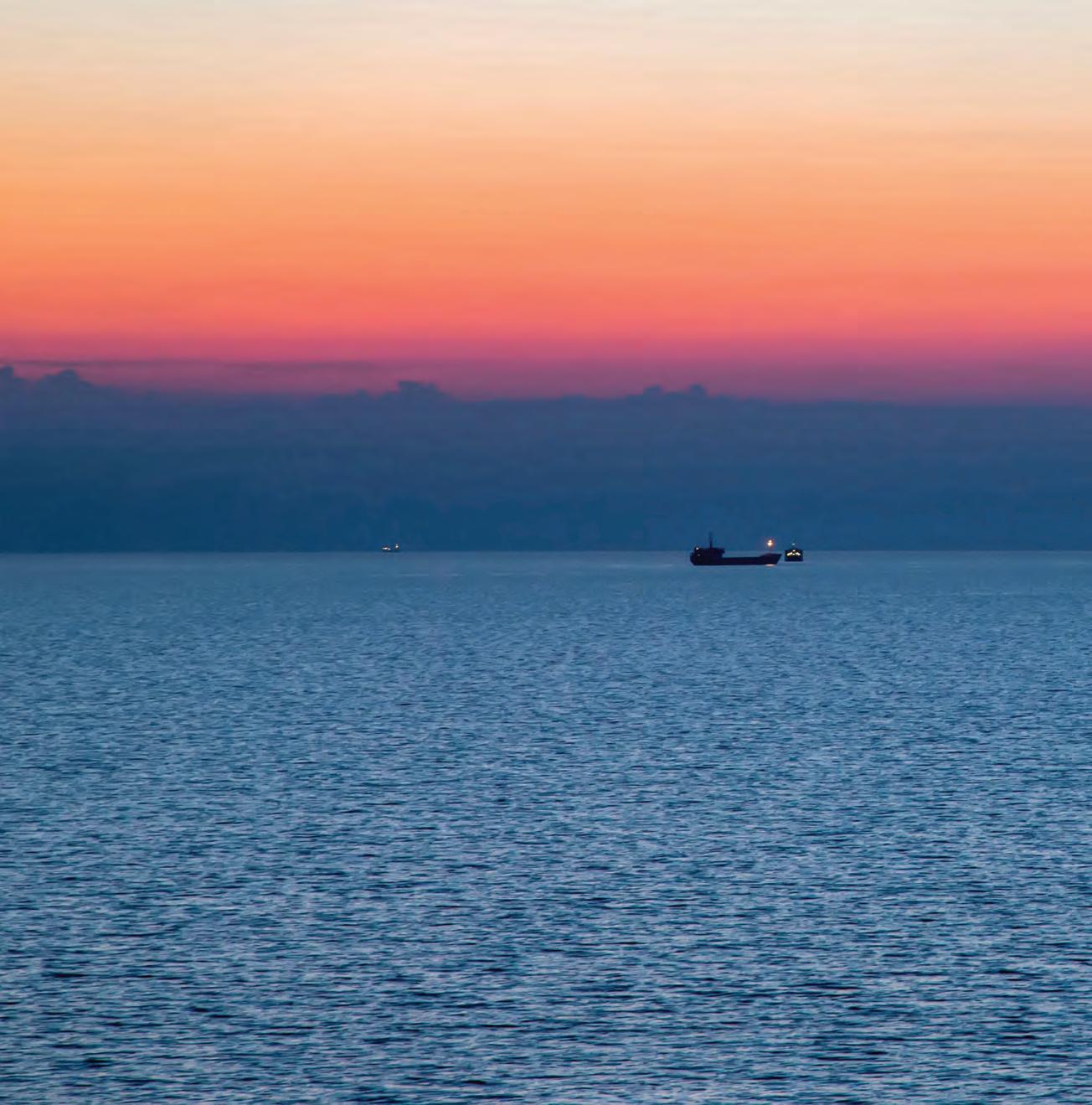
Bass Strait than you’ve backed losers,” Crumlin told the Senate committee. “It is one of the most dangerous waterways in the world.”
MUA Sydney branch Assistant Secretary Paul Garrett worked on charter vessels, ‘four-hour booze cruises’, tugboats and ferries in Sydney Harbour, before sailing internationally and interstate doing voyages for tugboats.
“When you started you needed to have what was known as the presea qualification,” he told the Senate inquiry. “You had to do your four weeks at TAFE, you had to get your firefighting training. You had to get your tickets.”
Garrett said working onboard a ferry you could have up to 1,100 passengers onboard. In the towing industry, you are towing 100,000 tonne ships, or on bunker barges, moving 1,500 tonnes of fuel.
“There’s quite a risk, if you’re unskilled,” he said. “Having the benefit of proper training and tuition was important when you stepped aboard the vessel.”
Jason Campbell had 19 years at sea in blue water shipping, towage and offshore oil and gas, before he became Tasmania branch secretary. He gained his Integrated Rating qualification by completing a certificate in marine operations. He then qualified as a second mate, by completing a diploma in Applied Science.
Campbell now has responsibility for crew on around 20 ships that trade to and from Tasmania. Nine are regulated Australian vessels, three or four are foreign flagged with Australian crew and the remainder are domestic commercial vessels.
“Since I left the sea and took up the role, I have seen a decline in the safety and training requirement for Australian seafarers,” he said.
Campbell gave an example of a local butcher, with no seafaring qualifications and no experience, who joined the crew of the John Duigan, trading between Tasmania, King Island and Victoria.
“These days the crew could be a mix of people off the street with no qualifications and trained seafarers,” he said. “It’s left to the owners to determine the risk.”
If crew requirements and operational requirements are not set by international standards it is a disaster waiting to happen, he added
Most vessels on the Bass Strait still remain under the Navigation Act now because the shipowners determined so.
“Toll are run by seafarers,” said Crumlin. “They accept the STCW (International Convention on Standards of Training, Certification and Watchkeeping for Seafarers) and they don’t try to cut corners. That’s the international standard for international seafarers. But it’s not imposed on them. Others can, and have, opted out.” “(Shipowners) are opting out at a rate of knots,” said Garry Keane.
On the issue of dangerous goods, Keane told the Productivity Commission, the dangers of going away from international regulation bodes catastrophe.
Cargoes such as bulk grain and ore pose risks that can lead to cargo shift and a catastrophic loss of stability. The Maritime National Safety Law require minimal training or rules. Vessels that are regulated by the Navigation Act, do. The Productivity Commission final report released on 1 October failed to recommend that interstate vessels remain under the Navigation Act. But it does recommend that the Australian Transport Safety Bureau expand its jurisdiction to cover domestic and intrastate vessels. The union hopes this will bring better safety investigations and outcomes.
Due to union lobbying, Assistant National Secretary Ian Bray reports AMSA has lifted its game in other areas of maritime safety over the past year. “AMSA has (also) been much more active in consulting with the MUA on new Marine Orders lately,” Bray reported.
As well, AMSA has established a new Shipping Consultative Forum with Ian Bray representing the union, and a National Safety Committee for Domestic Commercial Vessels with Paul Garrett from the Sydney Branch participating.
AMSA inspectors are now required to speak to health and safety representatives on Australian ships when doing inspections. Minimum safety requirements for offshore facilities in Marine Order 47 were significantly improved after pressure from the MUA. AMSA has started to issue annual safety reports covering domestic fatalities and safety incidents.
The campaign to improve the safety of domestic vessels under the National Law and bring interstate shipping back under the Navigation Act is ongoing. •
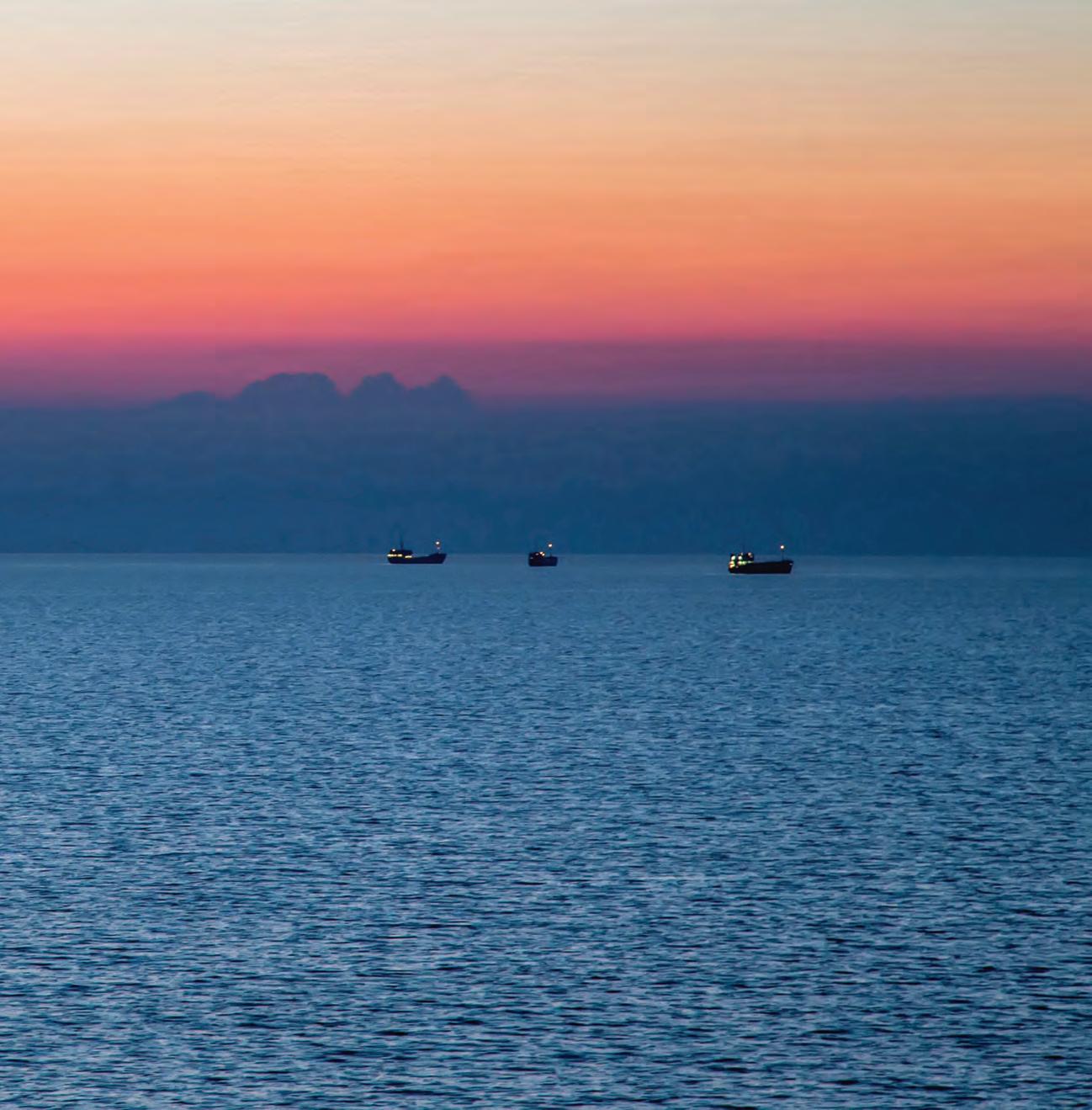
DEATHS AT SEA
Three deaths - NT deputy coroner’s testimony to senate inquiry exposes flaws in national domestic marine safety law
RYAN DONOGHUE, a young fellow from England died on the back of a prawn trawler in 2013. It was the 20-year-old’s first time out to sea.
He was electrocuted while trying to cut the shackles that connect the net to the otter boards. A wave hit him while he was working. His heart went into ventricular fibrillation.
This was one of three harrowing stories of deaths at sea told by Northern Territory Deputy Coroner Kelvin Currie to the Senate inquiry into domestic shipping law.
Despite previous recommendations, electric tools using 240 voltage were still used on the vessel. Donoghue had no supervision and no personal protective equipment (PPE), the investigation found.
He was working in shorts, singlet and bare feet. The safety management system was deficient. Donoghue had no induction training for power tools, no provision for wearing safety gear.
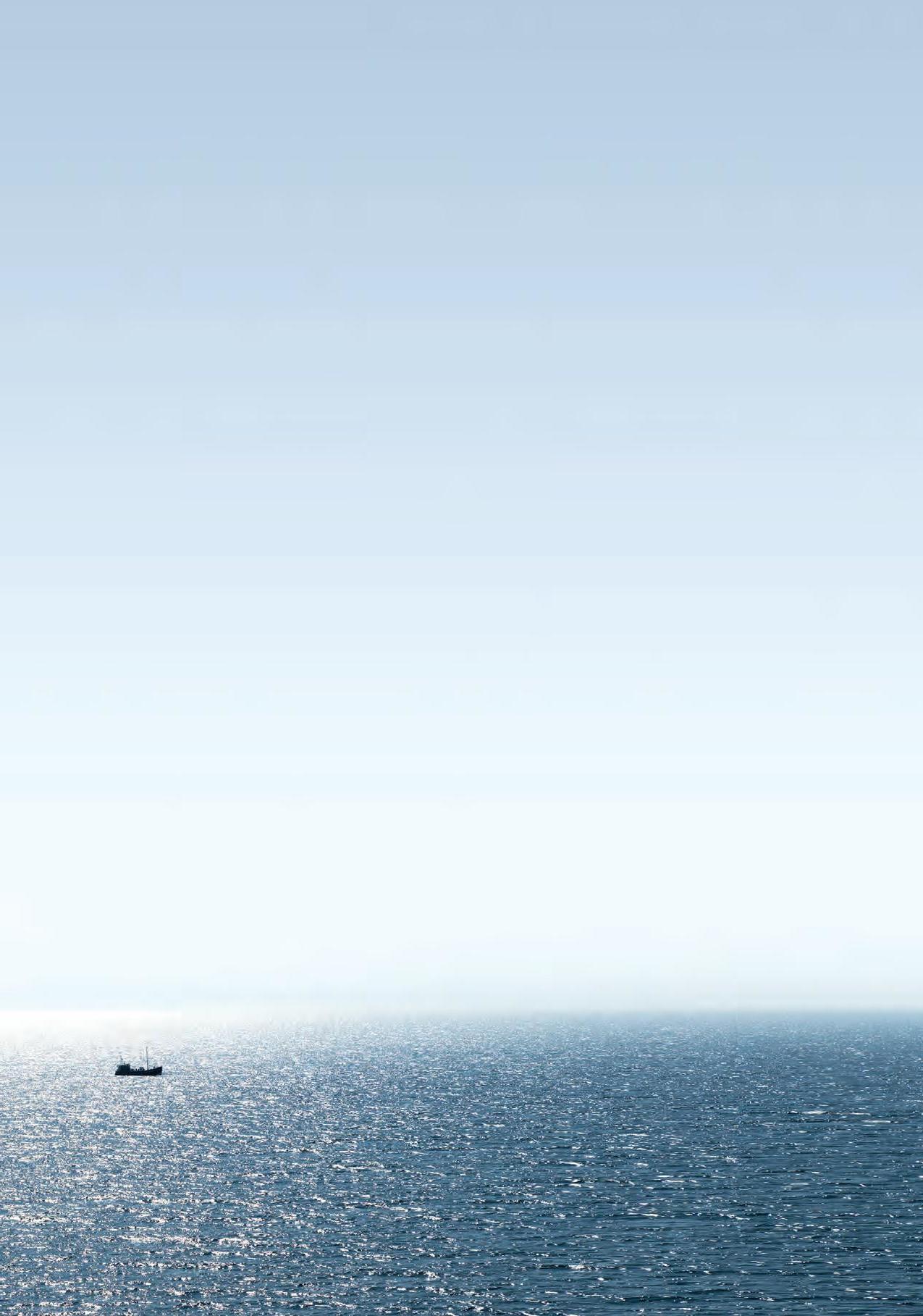
DANIEL BRADSHAW was 38 years of age. He had all his tickets and could captain vessels when he got the job of working on a barge servicing Top End communities in 2017.
But there was no gangway for the barge on the Darwin wharves. If the tide was up, crew could step off the fence on the barge onto the top of the dock using a ladder to steady themselves. Otherwise they jumped onto a tire, then climbed up the chains to the top of the dock.
Bradshaw made the jump to the tyre but fell back and hit his head on the bridge before dropping into six inches of water and drowning.
Why were there no gangways? The evidence before the coroner was that they were getting to it but there were other more important safety matters.
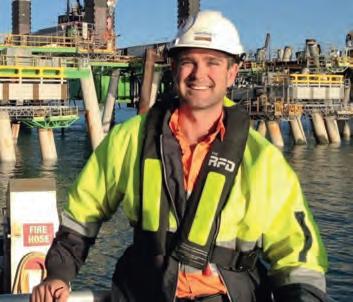
HARRY EVANS, 23, was also from England. He got work as a deckhand on prawn trawlers in 2018.
While helping to lower the nets he was bitten by a sea snake.
Generally, sea snakes bite dry, without venom in their fangs. But with Evans, the neurotoxin from the venom paralysed his eyelids, then his eyeballs. His cheeks started to droop and then the muscles that worked his lungs and his rib cage and his diaphragm stopped working.
He couldn’t breathe by himself. He was a long way out in the Gulf of Carpentaria. Evans was believed to be the first person killed by a sea snake bite since 1935. He died two hours after he was bitten at about 10:30am. Medical help got there at 2:30pm.
It is up to WorkSafe to regulate safety on state vessels. But it can only really do so while they are in port. At sea WorkSafe has no resources to go and check whether deckhands are working in bare feet, treading on snakes or not.
“Being the coronial jurisdiction, we obviously believe that where there’s a death there should be some response from a regulator,” the coroner said. “There should be persistence in fixing the systems that were identified to be not up to scratch before they closed their file.”
The Australian Transport Safety Bureau has no jurisdiction to investigate deaths at sea on domestic vessels. The Productivity Commission agrees with the union submission that it should. •
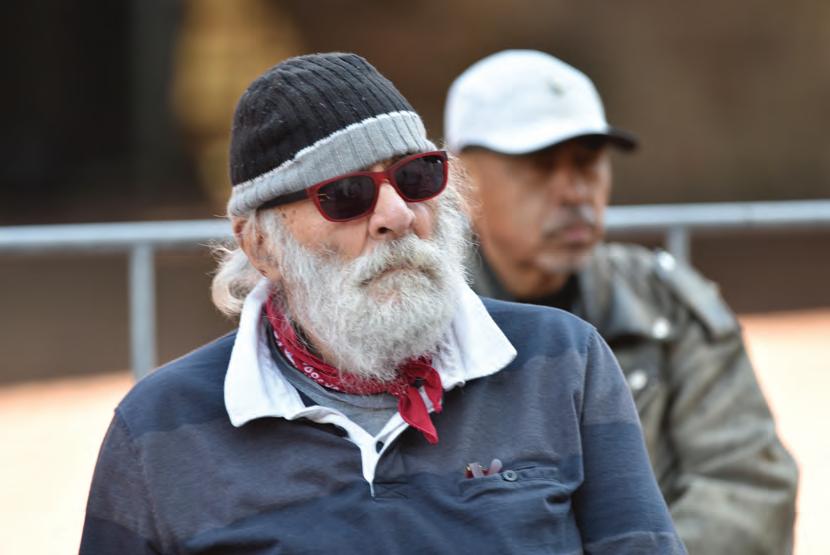
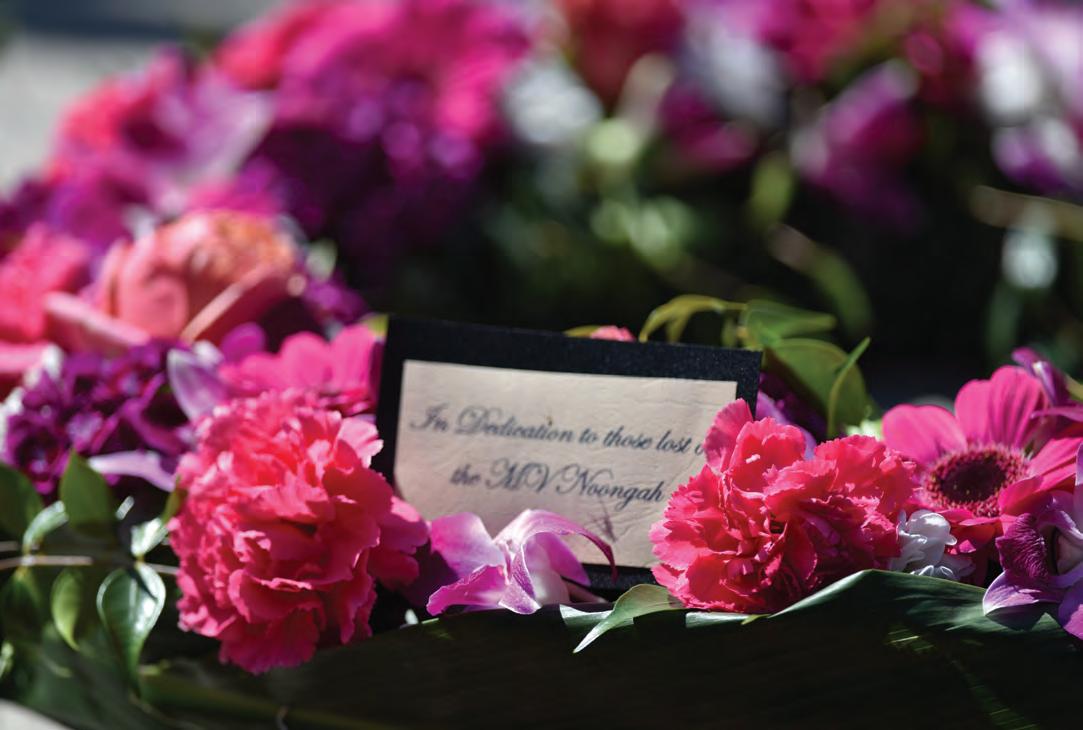
MARITIME DAY
The Anchors, Australian National Maritime Museum, Sydney, 29 September: Maritime workers and friends pay tribute to those who lost their lives at sea. World Maritime Day this year also recognised the invaluable efforts of millions of seafarers, dockers, ferry and port workers who are keeping the global supply chains operating during the COVID-19 pandemic, while highlighting the plight of hundreds of thousands seafarers who have been unable to return home to their families due to the crisis. Organised by the United Nations’ International Maritime Organization, the event shines a spotlight on the vital role of maritime workers in Australia’s security and economic success.
FROM TOP: Dean Summers, ITF Australia Co-ordination, Bill Giddins, MUA Veterans, Sister Mary Leahy, chaplain to seafarers in Sydney and Paul Garrett, MUA Sydney Branch Assistant Secretary
